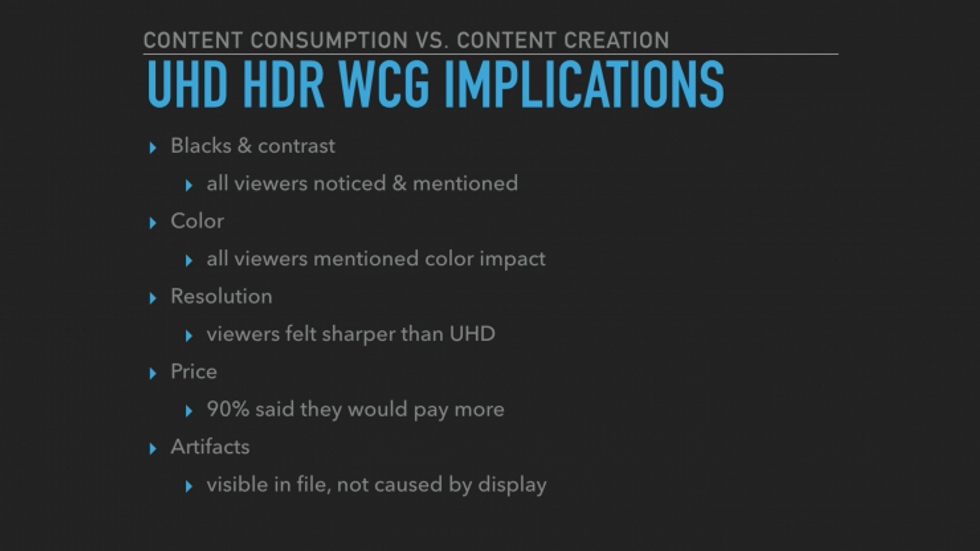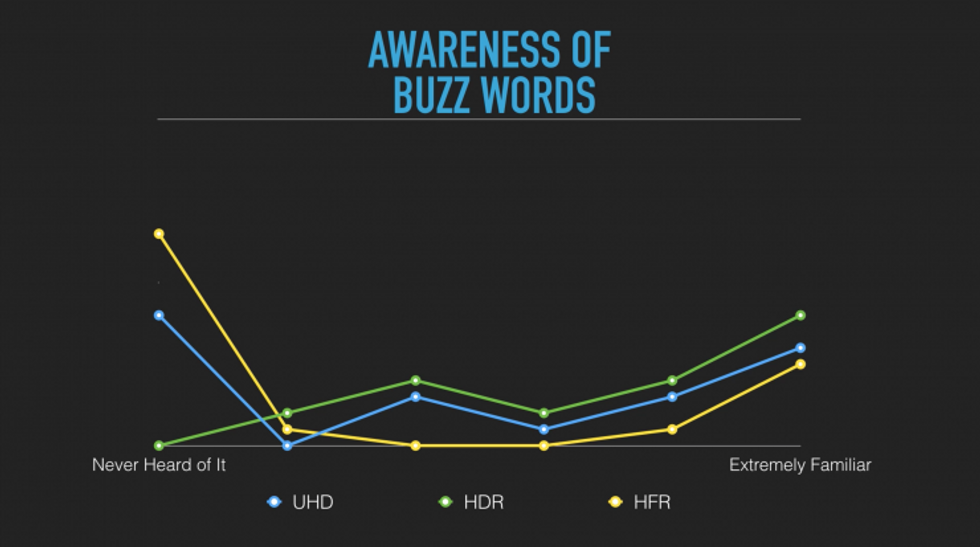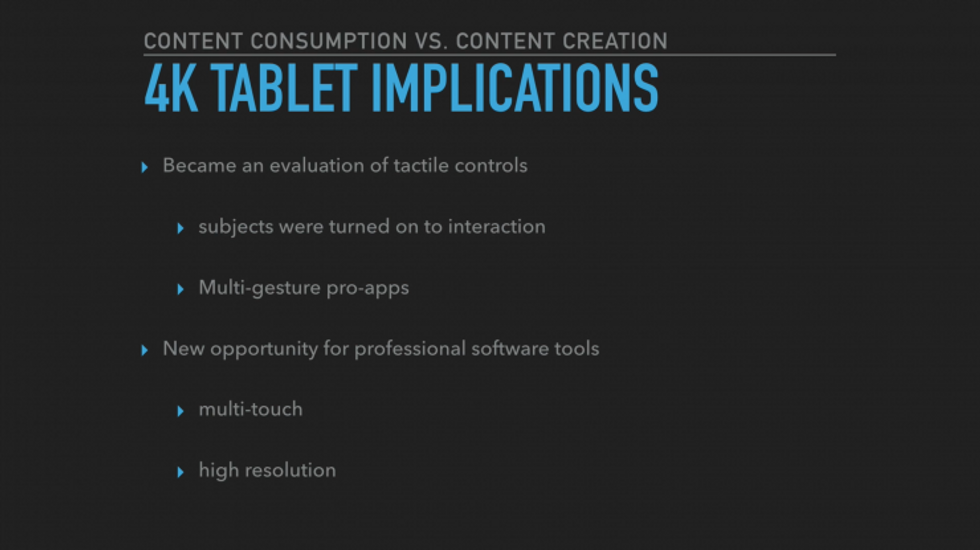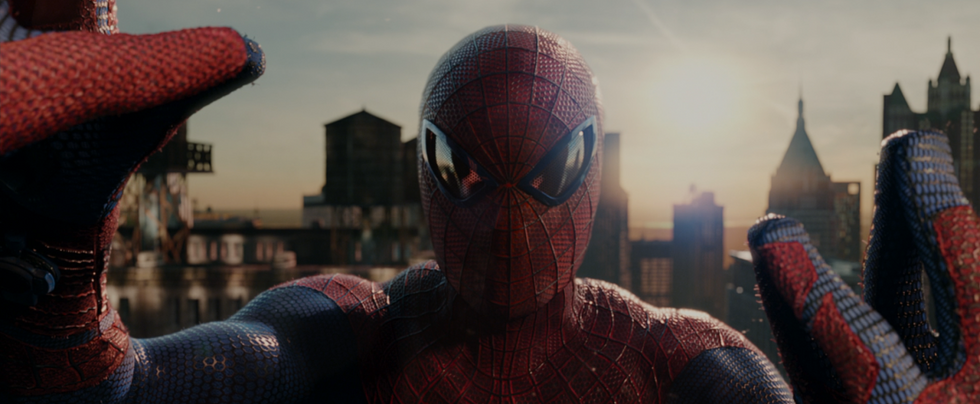Who Will Control Content in the Future? 4K, HDR, & Wide Color Gamut Might Decide
We're often beaten over the head with technical specs and jargon when it comes to display technologies, but that's because after many years of moderate advances, things are moving faster than ever.
We saw a massive leap in quality and viewer experience when we finally transitioned from 480p (SD) to 720p & 1080p (HD). Though many don't see 4K/8K as that big of a leap partially due to screen size, when these high resolutions are combined with High Dynamic Range (HDR, more detailed image from white to black, not the fake looking stuff our cell phones do) and Wide Color Gamut (WCG, greater depth of color), we get a viewing experience that is far superior to anything widely available right now. As we learn in the video below, a wide majority of viewers are even willing to pay more for content delivered and viewed in 4K HDR, which could have a huge impact on content providers and creators.
Light Iron President Michael Cioni, who recently posted 8K RED WEAPON footage and has generally been at the forefront of new technologies, recently talked at the 2016 Hollywood Post Alliance (HPA) Tech Retreat. The topic of conversation involved 4K, HDR, and WCG, how these tools are being deployed, and what they could mean for content creators and distributors down the road. A big part of the talk involved a test that Michael conducted where he took films students from a number of different schools, and showed them identical 4K content on displays with increasingly more advanced technology — first HD, then 4K, and finally 4K HDR. The results were interesting to say the least (for the longer version of this talk, scroll to the bottom of the post):
Most experienced people tend to be skeptical in this industry, but it's worth noting that Michael indicates he has his own bias towards these technologies just as anyone else in the room would (since he runs a post house). These findings aren't set in stone — it's simply another perspective.
As for the display test with film students, not only did he test different display technologies with the same material, but he also wanted to see how the film students reacted to grain in the image, and also how aspect ratio affected what they were watching. Here are some of the highlights from the film student test:
- Three displays used: Panasonic 60" PF11 HD Plasma, Sony 75" X940C 4K LCD, LG 65" EF9500 4K OLED
- REDRAY delivered identical 4K-mastered content shot on RED cameras: all were showing 24fps and about 25Mbps images (this was to show compressed material how people might see it at home)
- Most people had tablets, and watched most of their content on laptops. Most were subscribed to streaming services and did not have cable or satellite.
- Average age of viewers was 23, and 2/3 were Male
- While all thought the HD looked fantastic (9, 10 ratings), around 90% of them said they would pay more for 4K/UHD displays with HDR
- Grain and Letterboxing were acceptable for students depending on the content
- While 24fps is the standard for movies, it might not always be, and there's an inherent bias for United States viewers
Obviously film students might be slightly biased towards better quality, but what's clear from this test is that they were most impressed by the 4K HDR footage. For anyone who has seen HDR in person, it's a huge step up from traditionally finished footage. HDR feels much more like how our eyes see, and with this technology, we're actually utilizing most of the dynamic range our cameras are capturing. Instead of taking a log image with 12-14 stops and clamping it down to 8 or 9 with Rec709, we're actually getting to see all that extra contrast, from the darkest blacks all the way to the whitest whites.
Buzz Words
4K might be the buzzword for the moment, but it's interesting that because smartphones have HDR functionality built-in, people are actually the most familiar with that acronym:
I would imagine that the general public closely mirrors this, though if we were talking about 4K instead of UHD the numbers would probably be much, much higher. It's one of the unfortunate side effects of having all of this advanced technology, that we have to create all these new terms, and then we need to educate people on what they actually mean. We probably would have been better off not even using UHD as the term for consumer 4K, because on its own (Ultra High Definition), it really means nothing. People might be familiar with HD, but UHD sounds like better HD, and not the huge leap in resolution that it actually is (double vertical and horizontal — from 1920 x 1080 to 3840 x 2160).
4K Tablet/Laptop
Screen size is another part of this equation (the bigger the better for 4K), but as we saw with the test, even at far distances, the HDR stood out. Where the students really loved the 4K content was on a large tablet/laptop hybrid, as higher resolutions are even more dramatic with screens that are 15" to 20" at distances of only a foot or two:
Even if we don't see a huge push into larger screens right away, we are most definitely going to see smaller screens utilize things like 4K and HDR more and more.
What Does This All Mean?
It's become clear from this test that a younger audience will crave more 4K HDR content once they get a taste of it compared to traditional 4K or HD. Certainly a film student audience is going to be more biased, but if we are going to look forward, this is the next generation of folks that will be setting the trends. If content mastered in 4K HDR starts becoming the standard, anything less is going pale in comparison. Companies like Netflix and Amazon are already preparing for 4K HDR. The cable and satellite providers are no longer necessarily at the forefront when it comes to technology, and this fact is made clear by how many younger people are happy to watch content on streaming services, as it's more convenient, and the quality is improving all the time. Even movie theaters are likely going to be behind the curve when it comes to HDR — though that's exactly the place where you'd want the highest quality possible.
Audiences, especially those that skew younger, are fine watching on smaller screens, and as mobile devices start supporting HDR, videos that take advantage of it will stand out from the crowd. The true question for content creators will be how to take advantage of new standards as they happen. If you're shooting with a camera that has 12-14 stops of dynamic range, you can already take advantage of HDR in post, since the information is there. You'll be able to go back and remaster in HDR, but it will mean a whole new color grade.
HDR monitors aren't quite here yet, but advances in displays are moving faster and faster. Just ten years ago, smart phones didn't exist, and now we've got mobile 4K screens. HDR is just beginning to be implemented, but in a few years, we're likely going to see it on lots of screens.
As Michael says in the talk, we want things to move gradually, but the real world doesn't really work like that. Companies like Borders likely never saw Amazon as a threat, and likewise Taxi drivers couldn't have seen a company like Uber completely change how we get around cities. The quality of the content will always be a deciding factor, but presentation is becoming more and more important. These things move fast, and those who prepare (or at least are familiar), can have a leg up on the competition.
Here is a much longer version of Michael's HPA talk:
Source: Light Iron




 'The Amazing Spider-Man' (2012)
'The Amazing Spider-Man' (2012) 'Jaws' (1975)
'Jaws' (1975)









